Key takeaways:
- Watercolor painting encourages spontaneity and embraces mistakes as part of the artistic growth process.
- Essential supplies include high-quality watercolor paints, proper paper, and versatile brushes, which significantly impact artistic results.
- Key techniques such as wash, layering, negative painting, dry brushing, splattering, and glazing enhance depth, texture, and luminosity in artwork.
- Engaging projects, like nature-inspired series and memory-based paintings, can reignite creativity and strengthen the connection with the medium.
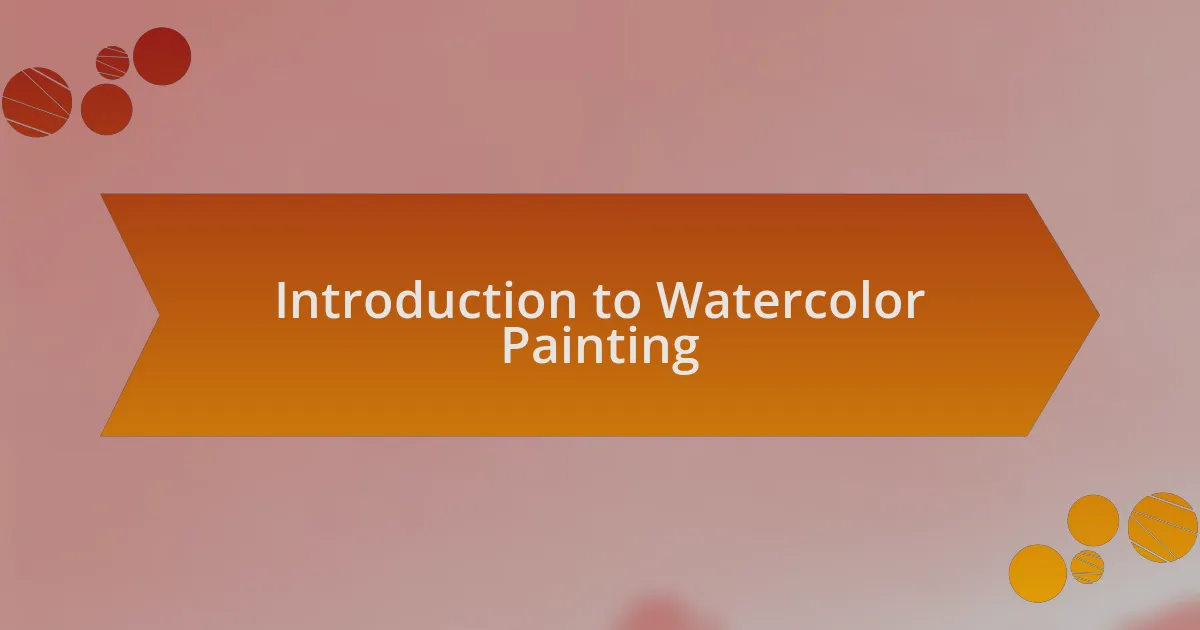
Introduction to Watercolor Painting
Watercolor painting has a unique charm that captures the imagination. I remember the first time I dipped my brush into the clear, vibrant pigments; the way colors flowed freely across the paper felt like magic. Have you ever experienced that exhilarating moment when you realize that you can create something beautiful with just water and paint?
The beauty of watercolor lies in its unpredictability. Each stroke can lead to surprising results, encouraging spontaneity that I find deeply liberating. It’s fascinating to see how a blend of pigments can evoke the gentle hues of a sunset or the crisp tones of a winter morning. How can such simple materials transform into something so expressive and evocative?
As I’ve explored various techniques, it’s become clear that mastering watercolor is a journey of patience and discovery. I often remind myself that each painting is a lesson, revealing something new about light, texture, and color mixing. What’s remarkable is how this medium invites us to embrace errors as part of our growth as artists, transforming them into unexpected highlights rather than setbacks.
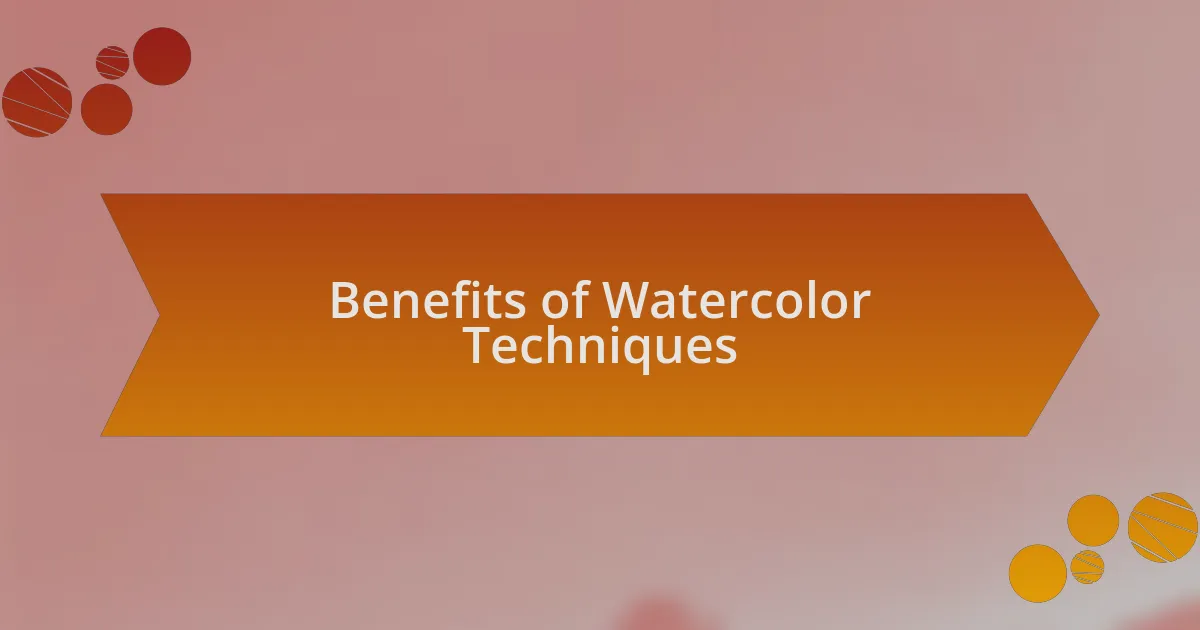
Benefits of Watercolor Techniques
Watercolor techniques offer a myriad of benefits that cater to both beginners and seasoned artists alike. For instance, the ability to layer colors creates depth and dimension in a painting. I often find that this layering process not only enhances the visual impact but also invites experimentation. Have you ever felt the thrill of discovering a new shade just beneath the surface? That little moment of revelation can be such a boost for creativity.
Another significant advantage of watercolor is its portability. I remember painting in a park on a sunny afternoon, using just a small set of paints and a sketchbook. The freedom of being able to work anywhere, coupled with the light and fluid nature of watercolors, allows for spontaneous inspiration. Can you imagine capturing a fleeting moment in nature with just a few brushstrokes? It’s incredibly satisfying to translate an experience into art right on the spot.
Finally, watercolor fosters a profound connection with the medium itself. Unlike other types of paints, watercolor encourages you to work with the water rather than just on the paper. I’ve learned to appreciate the dance between water and pigment, allowing them to interact in ways I never expected. Have you ever watched a drop of paint bloom on wet paper? That interplay teaches patience and acceptance, valuable lessons that extend beyond art into daily life.
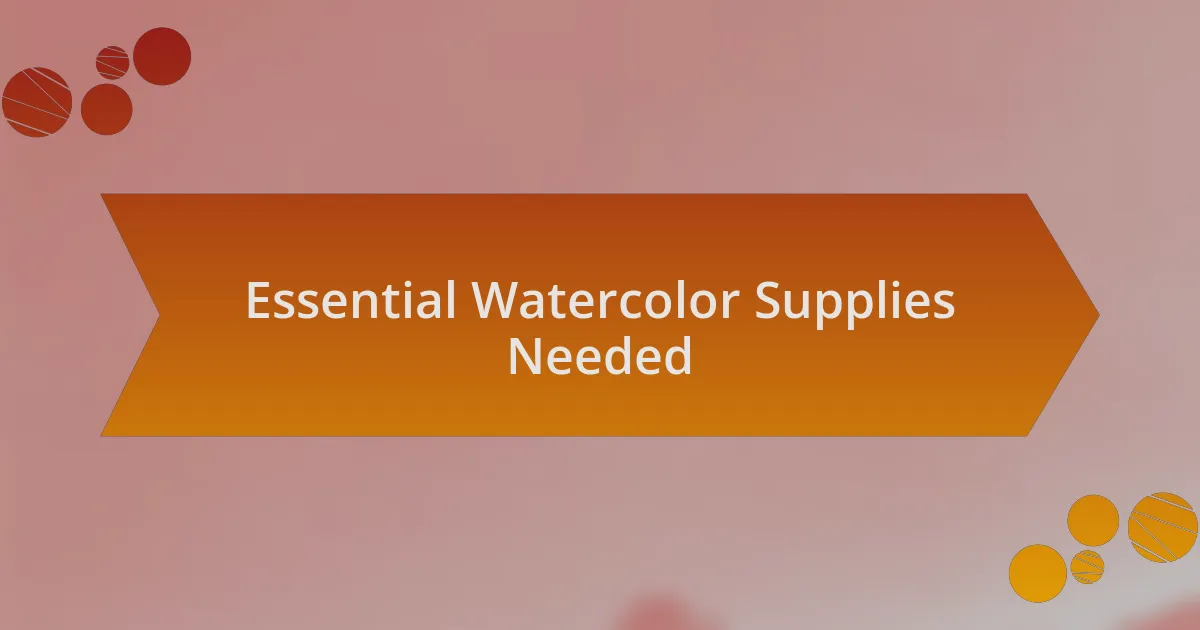
Essential Watercolor Supplies Needed
When it comes to essential watercolor supplies, the quality of your materials makes a notable difference. I’ve often found that investing in a good set of watercolor paints, be it in tubes or pans, is crucial for achieving vibrant results. Have you ever opened a fresh tube of paint and felt that excitement rush in? It’s more than just a color; it’s the promise of a new experience waiting to unfold on the paper.
Paper choice is equally important. I vividly remember my first attempts on cheap paper, where the colors bled and faded away frustratingly. Switching to proper watercolor paper changed everything for me. The texture allows for a beautiful spread of color, and it can handle the water without warping. Isn’t it amazing how the right surface can transform the way we approach our work?
Lastly, don’t underestimate the power of a good brush. I prefer a round brush for its versatility, allowing for both broad strokes and fine detail. There’s a certain joy in the way the brush feels in my hand, guiding my creativity. Have you ever felt that perfect balance between your brush and the canvas? It’s like having a conversation where every stroke brings your thoughts to life in a tangible way.
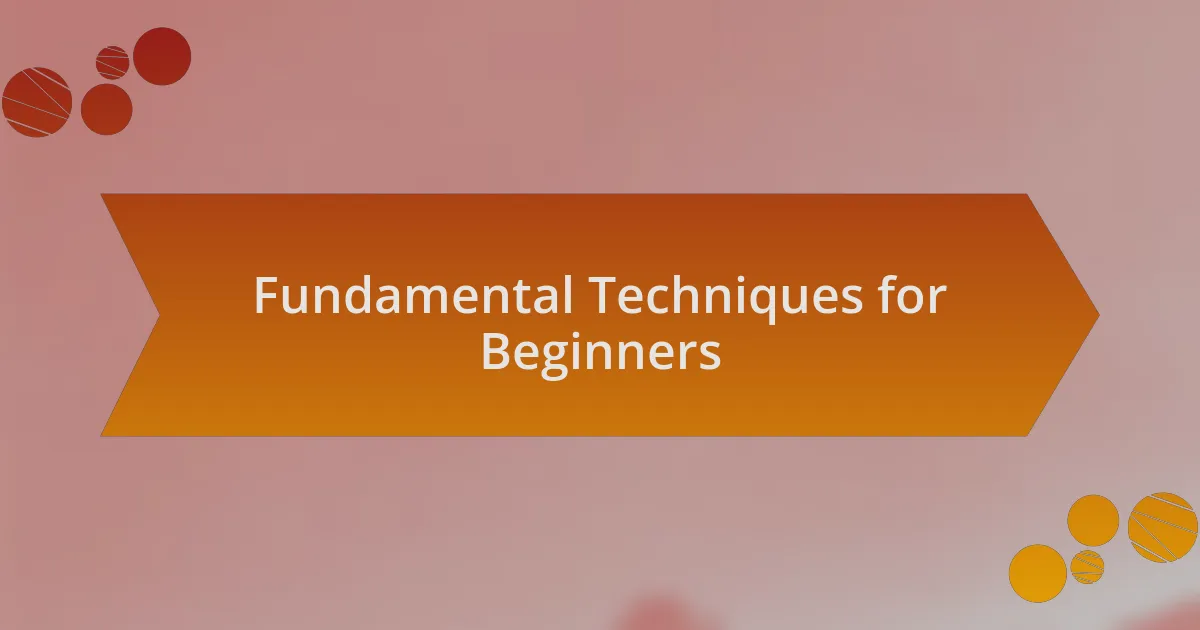
Fundamental Techniques for Beginners
When starting with watercolor, mastering the wash technique can be a game-changer. I remember the first time I created a smooth, even wash; it felt like unlocking a new level in my artistic journey. Practicing wet-on-wet and wet-on-dry washes allowed me to experiment with color blending and intensity, leading to surprisingly beautiful backgrounds. Have you ever watched how the pigments dance across the water? It’s truly mesmerizing.
Another fundamental technique worth embracing is layering. Initially, I was hesitant, worried that layering would muddy my work. Yet, with patience, I discovered that building up layers adds depth and complexity to my pieces. I still recall a vibrant sunset painting where each layer of color transformed the scene from flat to radiant. Isn’t it fascinating how a little bit of layering can breathe life into an image?
Don’t overlook the significance of negative painting either. This technique involves painting around the subject rather than on it. I remember my surprise the first time I outlined a flower by painting the background instead; it gave my piece an unexpected elegance. It made me realize that sometimes less is more, and creating contrast can make your subject truly stand out. Have you experimented with negative space? It’s an exhilarating way to approach your compositions.

My Favorite Techniques Explained
One of my favorite techniques is dry brushing. It gives a unique texture that can elevate your painting, especially when you want to add highlights or fine details. I recall the thrill I felt when I used this method on a rustic landscape; the wisps of grass came alive with subtle strokes that felt almost magical. Have you ever noticed how a few careful touches can completely change the mood of a piece?
Another technique I enjoy is splattering, which adds a playful spontaneity to my work. The first time I tried it, I wasn’t sure what to expect; I just let the brush loose with some vibrant colors. To my delight, those random droplets created a joyful energy in a cityscape I was working on. What is it about those little surprises on the canvas that makes watercolor feel so alive?
Finally, I embrace the technique of glazing, which involves applying thin, transparent layers of paint. Initially, I found this practice daunting, as it requires both confidence and timing. However, once I overcame my fear, I discovered its transformative power, especially in achieving luminosity in my portraits. That moment when my subject’s skin glowed with color felt like a true revelation. Have you ever experienced that transformative effect with glazing? It’s truly exhilarating.
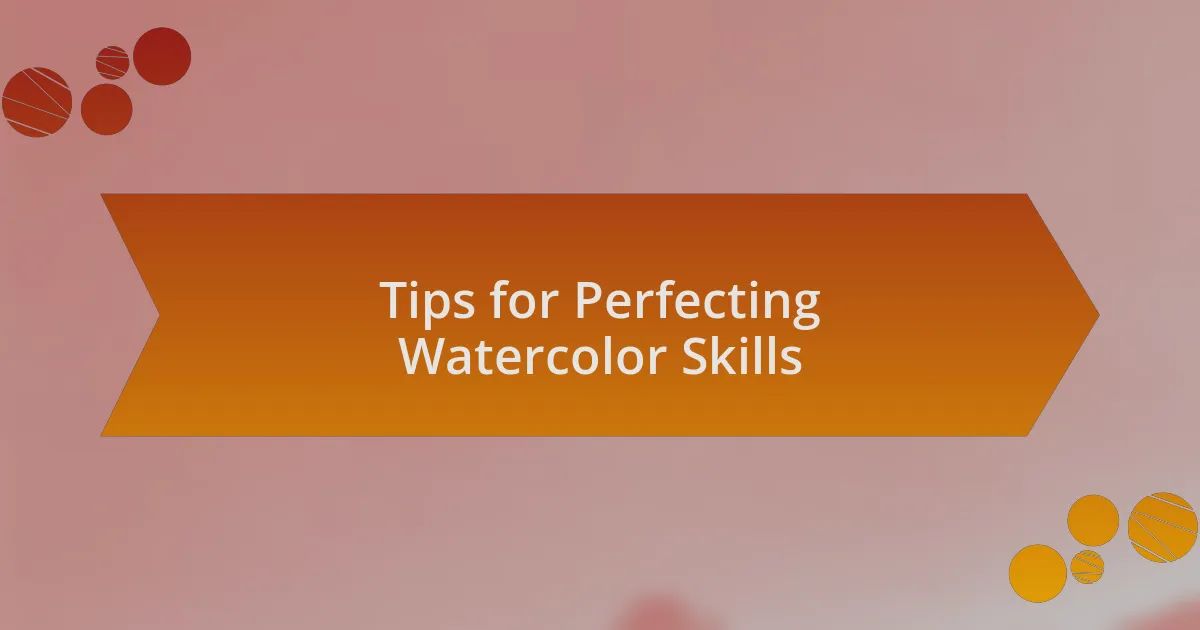
Tips for Perfecting Watercolor Skills
When working with watercolor, mastering the balance between water and pigment can be a game changer. I learned this the hard way during a rainy day painting session, where I over-thinned my paint. The result was a washed-out piece that felt flat and lifeless. Now, I experiment with various water-to-paint ratios, understanding that a little more pigment can lead to bold, striking washes. Have you ever been surprised by the vibrancy that a simple adjustment can bring?
Another crucial tip is to embrace mistakes rather than fear them. I fondly remember a painting that didn’t go as planned; what I initially saw as a flaw turned into a unique background element that I incorporated into the final piece. It taught me that in watercolor, serendipity often leads to beautiful surprises. How often do we let our mistakes dictate the outcome instead of using them as a guide?
Lastly, I recommend regularly practicing different brush techniques, as each brush can behave differently with watercolors. One afternoon, I dedicated my time to experimenting with a fan brush and discovered it created stunning leaf patterns I hadn’t envisioned. That session underscored the importance of not just painting subjects, but also playing with tools. Have you explored the potential of your brushes? You might uncover capabilities you never knew existed.
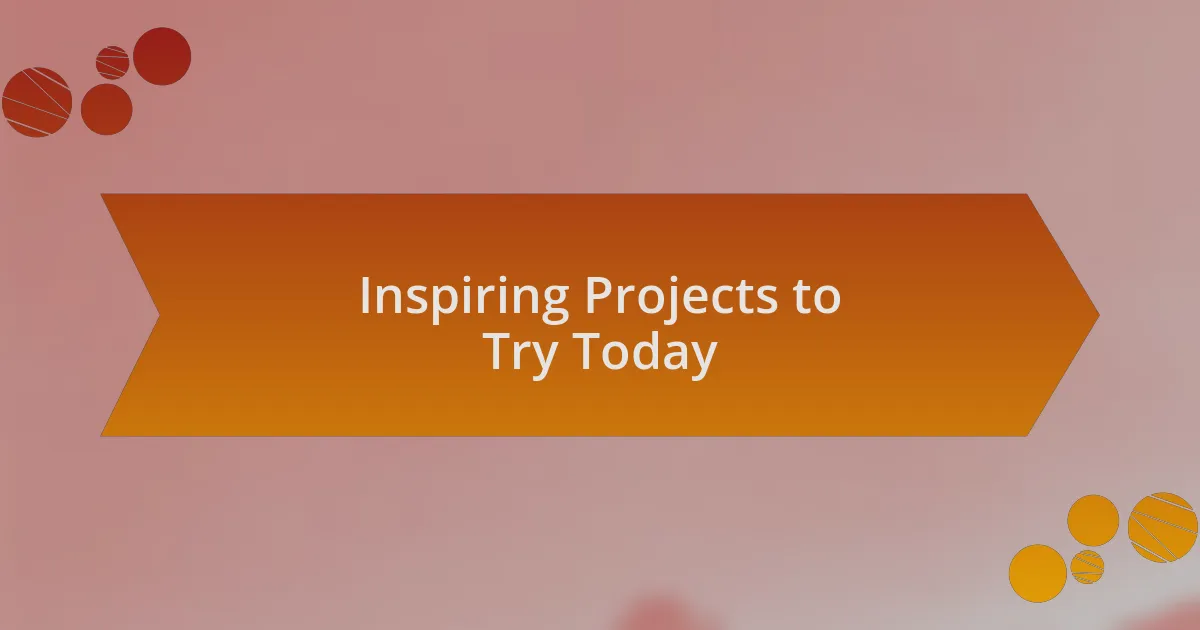
Inspiring Projects to Try Today
One project that truly reignited my passion for watercolor was creating a nature-inspired series. I gathered some leaves and flowers from my garden, and as I painted each one, I felt an intimate connection with nature. Watching the colors blend and flow reminded me of how every stroke could bring new life to the ordinary. Have you ever felt so inspired by your surroundings that it transformed your work?
Another idea is to try your hand at painting a favorite memory. I still cherish the warm summer afternoon I captured in a piece depicting a family picnic in the park. The hues of the sunset and the laughter frozen on paper transported me back to that day. This project serves as a wonderful opportunity to reflect on treasured moments while allowing your creativity to flourish—what memory would you choose to bring to life with color?
If you’re seeking a challenge, why not dive into a mini portrait series? I recently tackled this and focused on friends’ pets. The joy of capturing their personalities through watercolor taught me patience and detail. Each portrait revealed new techniques and created a sense of achievement. What stories could you share through your brushstrokes?